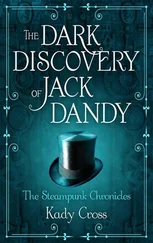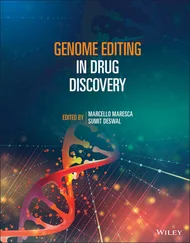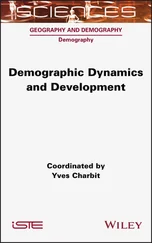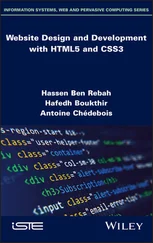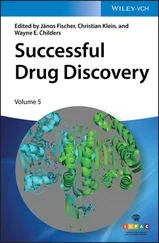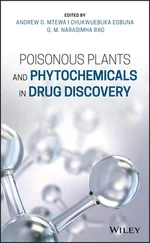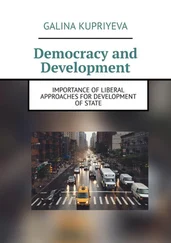Contemporary Accounts in Drug Discovery and Development
Здесь есть возможность читать онлайн «Contemporary Accounts in Drug Discovery and Development» — ознакомительный отрывок электронной книги совершенно бесплатно, а после прочтения отрывка купить полную версию. В некоторых случаях можно слушать аудио, скачать через торрент в формате fb2 и присутствует краткое содержание. Жанр: unrecognised, на английском языке. Описание произведения, (предисловие) а так же отзывы посетителей доступны на портале библиотеки ЛибКат.
- Название:Contemporary Accounts in Drug Discovery and Development
- Автор:
- Жанр:
- Год:неизвестен
- ISBN:нет данных
- Рейтинг книги:4 / 5. Голосов: 1
-
Избранное:Добавить в избранное
- Отзывы:
-
Ваша оценка:
- 80
- 1
- 2
- 3
- 4
- 5
Contemporary Accounts in Drug Discovery and Development: краткое содержание, описание и аннотация
Предлагаем к чтению аннотацию, описание, краткое содержание или предисловие (зависит от того, что написал сам автор книги «Contemporary Accounts in Drug Discovery and Development»). Если вы не нашли необходимую информацию о книге — напишите в комментариях, мы постараемся отыскать её.
A useful guide for medicinal chemists and pharmaceutical scientists Contemporary Accounts in Drug Discovery and Development
Contemporary Accounts in Drug Discovery and Development
Contemporary Accounts in Drug Discovery and Development
Contemporary Accounts in Drug Discovery and Development — читать онлайн ознакомительный отрывок
Ниже представлен текст книги, разбитый по страницам. Система сохранения места последней прочитанной страницы, позволяет с удобством читать онлайн бесплатно книгу «Contemporary Accounts in Drug Discovery and Development», без необходимости каждый раз заново искать на чём Вы остановились. Поставьте закладку, и сможете в любой момент перейти на страницу, на которой закончили чтение.
Интервал:
Закладка:
56 56 Ghanakota, P., Bos, P.H., Konze, K.D. et al. (2020). Combining cloud‐based free‐energy calculations, synthetically aware enumerations, and goal‐directed generative machine learning for rapid large‐scale chemical exploration and optimization. J. Chem. Inf. Model. https://doi.org/10.1021/acs.jcim.0c00120.
57 57 Konze, K.D., Bos, P.H., Dahlgren, M.K. et al. (2019). Reaction‐based enumeration, active learning, and free energy calculations to rapidly explore synthetically tractable chemical space and optimize potency of cyclin‐dependent kinase 2 inhibitors. J. Chem. Inf. Model. 59: 3782–3793.
58 58 Gómez‐Bombarelli, R., Wei, J.N., Duvenaud, D. et al. (2018). Automatic chemical design using a data‐driven continuous representation of molecules. ACS Cent. Sci. 4: 268–276.
59 59 Kwon, Y., Yoo, J., Choi, Y.‐S. et al. (2019). Efficient learning of non‐autoregressive graph variational autoencoders for molecular graph generation. J. Cheminformatics https://doi.org/10.1186/s13321‐019‐0396‐x.
60 60 Popova, M., Isayev, O., and Tropsha, A. (2018). Deep reinforcement learning for de novo drug design. Sci. Adv. 4: eaap7885.
61 61 Zhou, Z., Kearnes, S., Li, L. et al. (2019). Optimization of molecules via deep reinforcement learning. Sci. Rep. 9: 10752.
62 62 Zhavoronkov, A., Ivanenkov, Y.A., Aliper, A. et al. (2019). Deep learning enables rapid identification of potent DDR1 kinase inhibitors. Nat. Biotechnol. 37: 1038–1040.
63 63 Abel, R. and Bhat, S. (2017). Free energy calculation guided virtual screening of synthetically feasible ligand R‐group and scaffold modifications: an emerging paradigm for lead optimization. Annu. Rep. Med. Chem.: 237–262. https://doi.org/10.1016/bs.armc.2017.08.007.
64 64 Zhang, L., Tan, J., Han, D., and Zhu, H. (2017). From machine learning to deep learning: progress in machine intelligence for rational drug discovery. Drug Discov. Today 22: 1680–1685.
65 65 Wu, Z., Ramsundar, B., Feinberg, E.N. et al. (2018). MoleculeNet: a benchmark for molecular machine learning. Chem. Sci. 9: 513–530.
66 66 Feinberg, E.N., Joshi, E., Pande, V.S., and Cheng, A.C. (2020). Improvement in ADMET prediction with multitask deep featurization. J. Med. Chem. 63: 8835–8848.
67 67 Wieder, O., Kohlbacher, S., Kuenemann, M. et al. (2020). A compact review of molecular property prediction with graph neural networks. Drug Discov. Today Technol. https://doi.org/10.1016/j.ddtec.2020.11.009.
68 68 Knight, J.L., Krilov, G., Borrelli, K.W. et al. (2014). Leveraging data fusion strategies in multireceptor lead optimization MM/GBSA end‐point methods. J. Chem. Theory Comput. 10: 3207–3220.
69 69 Wang, E., Sun, H., Wang, J. et al. (2019). End‐point binding free energy calculation with MM/PBSA and MM/GBSA: strategies and applications in drug design. Chem. Rev. 119: 9478–9508.
70 70 Halgren, T.A., Murphy, R.B., Friesner, R.A. et al. (2004). Glide: a new approach for rapid, accurate docking and scoring. 2. Enrichment factors in database screening. J. Med. Chem. 47: 1750–1759.
71 71 Nissink, J.W.M., Murray, C., Hartshorn, M. et al. (2002). A new test set for validating predictions of protein‐ligand interaction. Proteins: Struct. Funct. Bioinformatics: 457–471. https://doi.org/10.1002/prot.10232.
72 72 Verdonk, M.L., Cole, J.C., Hartshorn, M.J. et al. (2003). Improved protein‐ligand docking using GOLD. Proteins 52: 609–623.
73 73 McGann, M. (2011). FRED pose prediction and virtual screening accuracy. J. Chem. Inf. Model.: 578–596. https://doi.org/10.1021/ci100436p.
74 74 Rarey, M., Kramer, B., Lengauer, T., and Klebe, G. (1996). A fast flexible docking method using an incremental construction algorithm. J. Mol. Biol. 261: 470–489.
75 75 Jain, A.N. (2003). Surflex: fully automatic flexible molecular docking using a molecular similarity‐based search engine. J. Med. Chem. 46: 499–511.
76 76 Abel, R., Wang, L., Harder, E.D. et al. (2017). Advancing drug discovery through enhanced free energy calculations. Acc. Chem. Res. 50: 1625–1632.
77 77 Wang, L., Wu, Y., Deng, Y. et al. (2015). Accurate and reliable prediction of relative ligand binding potency in prospective drug discovery by way of a modern free‐energy calculation protocol and force field. J. Am. Chem. Soc. 137: 2695–2703.
78 78 Kuhn, M., Firth‐Clark, S., Tosco, P. et al. (2020). Assessment of binding affinity via alchemical free‐energy calculations. J. Chem. Inf. Model. 60: 3120–3130.
79 79 Lee, T.‐S., Allen, B.K., Giese, T.J. et al. (2020). Alchemical binding free energy calculations in AMBER20: advances and best practices for drug discovery. J. Chem. Inf. Model. 60: 5595–5623.
80 80 Lin, Z., Zou, J., Peng, C. et al. (2020).A Cloud Computing Platform for Scalable Relative and Absolute Binding Free Energy Prediction: New Opportunities and Challenges for Drug Discovery. ChemRxiv. doi:10.26434/chemrxiv.13096157.v1
81 81 Gapsys, V., Pérez‐Benito, L., Aldeghi, M. et al. (2020). Large scale relative protein ligand binding affinities using non‐equilibrium alchemy. Chem. Sci.: 1140–1152. https://doi.org/10.1039/c9sc03754c.
82 82 Song, L.F., Lee, T.‐S., Zhu, C. et al. (2019). Using AMBER18 for relative free energy calculations. J. Chem. Inf. Model. 59: 3128–3135.
83 83 Göller, A.H., Kuhnke, L., Montanari, F. et al. (2020). Bayer's in silico ADMET platform: a journey of machine learning over the past two decades. Drug Discov. Today 25: 1702–1709.
84 84 Kar, S., Roy, K., and Leszczynski, J. (2019). On error measures for validation and uncertainty estimation of predictive QSAR models. Comput. Nanotoxicol.: 437–493. https://doi.org/10.1201/9780429341373‐10.
85 85 Hanser, T., Barber, C., Marchaland, J.F., and Werner, S. (2016). Applicability domain: towards a more formal definition. SAR QSAR Environ. Res. 27: 893–909.
86 86 Leung, S.S.F., Sindhikara, D., and Jacobson, M.P. (2016). Simple predictive models of passive membrane permeability incorporating size‐dependent membrane‐water partition. J. Chem. Inf. Model. 56: 924–929.
87 87 Leung, S.S.F., Mijalkovic, J., Borrelli, K., and Jacobson, M.P. (2012). Testing physical models of passive membrane permeation. J. Chem. Inf. Model. 52: 1621–1636.
88 88 Hall, M.L., Jorgensen, W.L., and Whitehead, L. (2013). Automated ligand‐ and structure‐based protocol for in silico prediction of human serum albumin binding. J. Chem. Inf. Model. 53: 907–922.
89 89 Lexa, K.W., Dolghih, E., and Jacobson, M.P. (2014). A structure‐based model for predicting serum albumin binding. PLoS One 9: e93323.
90 90 Dickson, C.J., Velez‐Vega, C., and Duca, J.S. (2020). Revealing molecular determinants of hERG blocker and activator binding. J. Chem. Inf. Model. 60: 192–203.
91 91 Mondal, S., Tresadern, G., Greenwood, J. et al. (2019). A Free Energy Perturbation Approach to Estimate the Intrinsic Solubilities of Drug‐like Small Molecules. ChemRxiv. doi:10.26434/chemrxiv.10263077
92 92 Albanese, S.K., Chodera, J.D., Volkamer, A. et al. (2020). Is structure‐based drug design ready for selectivity optimization? J. Chem. Inf. Model. https://doi.org/10.1021/acs.jcim.0c00815.
93 93 Harwood, H.J. Jr. (2005). Treating the metabolic syndrome: acetyl‐CoA carboxylase inhibition. Expert Opin. Ther. Targets 9: 267–281.
94 94 Harwood, H.J. and James, H.H. (2012). The adipocyte as an endocrine organ in the regulation of metabolic homeostasis. Neuropharmacology: 57–75. https://doi.org/10.1016/j.neuropharm.2011.12.010.
95 95 Lucas, C., Lucas, G., Lucas, N. et al. (2018). A systematic review of the present and future of non‐alcoholic fatty liver disease. Clin. Exp. Hepatol. 4: 165–174.
96 96 Abu‐Elheiga, L., Matzuk, M.M., Abo‐Hashema, K.A., and Wakil, S.J. (2001). Continuous fatty acid oxidation and reduced fat storage in mice lacking acetyl‐CoA carboxylase 2. Science 291: 2613–2616.
Читать дальшеИнтервал:
Закладка:
Похожие книги на «Contemporary Accounts in Drug Discovery and Development»
Представляем Вашему вниманию похожие книги на «Contemporary Accounts in Drug Discovery and Development» списком для выбора. Мы отобрали схожую по названию и смыслу литературу в надежде предоставить читателям больше вариантов отыскать новые, интересные, ещё непрочитанные произведения.
Обсуждение, отзывы о книге «Contemporary Accounts in Drug Discovery and Development» и просто собственные мнения читателей. Оставьте ваши комментарии, напишите, что Вы думаете о произведении, его смысле или главных героях. Укажите что конкретно понравилось, а что нет, и почему Вы так считаете.

